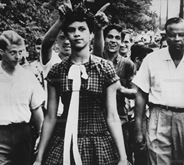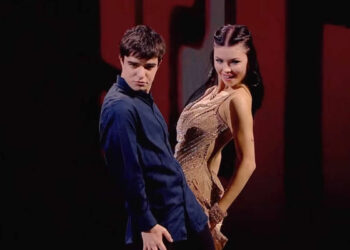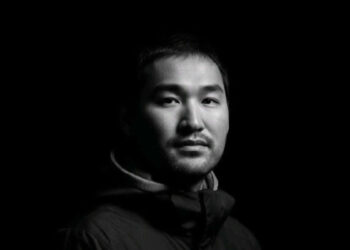Guest Article by Amy Cobb
Amy Cobb feels most at home behind a keyboard or a snapping shutter. She’s a Jill-of-All-Trades media refugee turned blogger who, since jumping ship from the Fourth Estate, blogs on all things media and media-education-related. Most recently she’s worked on cataloging the best photography colleges. When not writing, Amy is thwarted by square foot gardening or playing with her Cavalier King Charles Spaniel, Snarls Barkley.
For me and most everyone else I imagine, it’s impossible to be confronted by an awful, old grainy lynching photo, one featuring a sea of Ku Klux Klan hoods at some racist march or peaceful protestors being sprayed with a fire hose in Birmingham without shuddering a little bit. However, there’s a pleasing symmetry to the idea that some of the Civil Rights movement’s usually nonviolent struggle (at least nonviolent among the pro-Civil Rights supporters) is often best reflected images of quiet dignity from those fighting for equality or reveal the ugliness of racism with seemingly peaceful or mundane shots.
Those examples that speak to the dignity and strength of the Civil Rights heroes and activists include Dr. Martin Luther King Jr. waving to the crowd after his “I Have a Dream” speech in Washington DC.

Like so many others, I also can’t help but equate the movement with a similarly impressive representative- Rosa Parks. The photo of her which comes to mind is the one taken a year after she began a successful campaign to have the Montgomery buses desegregated in which she sits at the front of the same bus, gazing out the window.
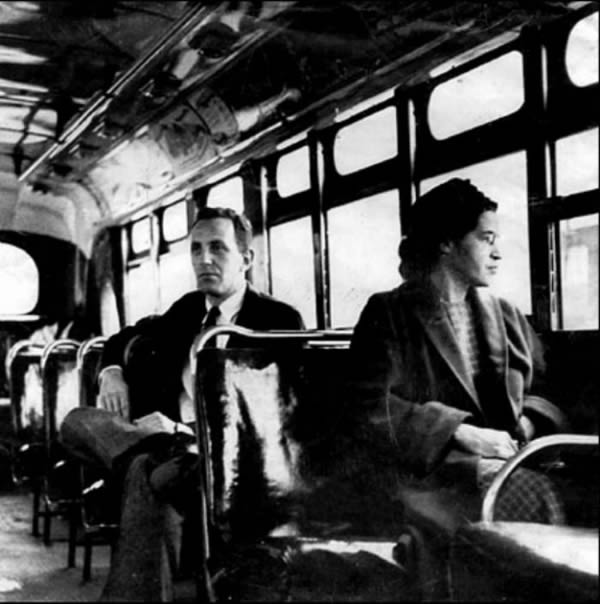
Less uplifting, but certainly no less compelling are two old photos which are fairly similar to one another- both featuring young women walking on or near an educational institution while a furious, mocking, screaming crowd of white antagonists follows. Both the women are early enrollees in up-until-then segregated schools. In September of 1957 Dorothy Counts walks before an angry mob after transferring to a white high school in North Carolina.
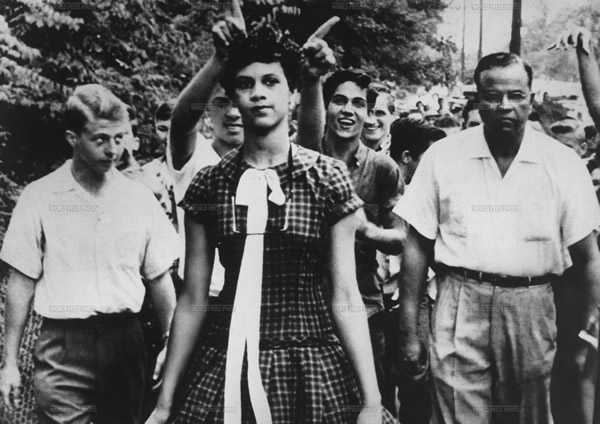
© Douglas Martin / World Press Photo
While in the same month of the same year Elizabeth Eckford maintained her composure on in front of a similar mob on her first day at a recently desegregated (sort of) high school in Little Rock, Arkansas.
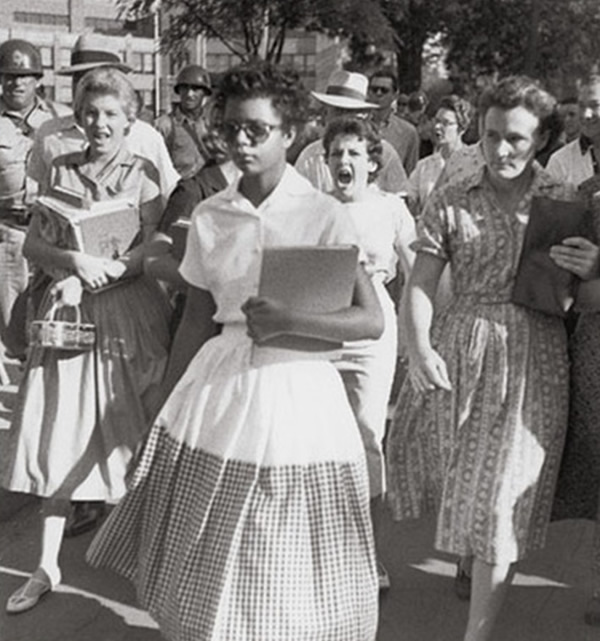
© Will Counts / Arkansas Democrat
What I love most about these photos is the bravery and determination of two young women whom many people forget were just 15 years old when the pictures were taken! Despite their age, it’s hard to imagine more adult expressions. These young women’s faces say it all. Elizabeth Eckford looks totally, fiercely committed to simply attending school while (in all of her photos actually).
Dorothy Counts looks disappointed, annoyed and comparably determined. Hers is the look of someone being hassled by a group of spoiled, troublesome children about which one can do nothing.
That black Americans were initially owned in brutal captivity for hundreds of years; were then freed to be terrorized and murdered by the KKK; went on to deal with constant, basic and profoundly unfair political, social and financial inequality; were subjected to the privations of the Jim Crow laws and dealt with institutionalized and ubiquitous racism for years is heartbreaking and immensely frustrating. That Counts and Eckford grew up in this environment of hatred, did no harm to their white neighbors, only wanted to attend decent, equal high schools, made such an incredibly brave choice, weathered the hatred, cruelty and indignity of their abusers with dignity and grace and did it all before they were 16 still blows me away. Those are the sort of pictures that change the world.
Please check our previous related topics:

